14
2023
-
08
Micro- and nanorobotics applied to the targeted transport of stem cells
With the rapid development of robotics technology, robots are more and more widely used in daily life, and they are also of great significance to the development and progress of society. With the development of nanotechnology, micro/nanorobot (micro/nanorobot) has gradually become a hotspot for research, and they can operate at the micron or even nanometer scale. Due to the small size of these robots, which are only at the micron or nano level, they can enter into more confined spaces and can also form clusters to work together to accomplish specific tasks.

01 Micro and Nano Robots
With the rapid development of robotics technology, robots are more and more widely used in daily life, and they are also of great significance to the development and progress of society. With the development of nanotechnology, micro/nanorobot (micro/nanorobot) has gradually become a hotspot for research, and they can operate at the micron or even nanometer scale. Due to the small size of these robots, which are only at the micron or nano level, they can enter into more confined spaces and can also form clusters to work together to accomplish specific tasks.
02 Micro-robots loaded with stem cells
Stem cells with differentiation potential have been widely used in research for the treatment of disease. Stem cell therapy is a promising treatment for repairing damage to tissues or organs, and the cells are able to actively sense and respond to disease with fewer side effects on the body than passive chemotherapy. However, there are still challenges in delivering functional stem cells to the site of disease, and if too many cells are used, there is a risk of an excessive immune response due to overproduction of cytokines.
This precise delivery method will increase the efficacy and reduce the side effects of stem cell therapy with specially designed micro-robots that can load stem cells and deliver them to targeted areas, especially tissues or cavities that are difficult to reach with conventional therapeutic dosages.
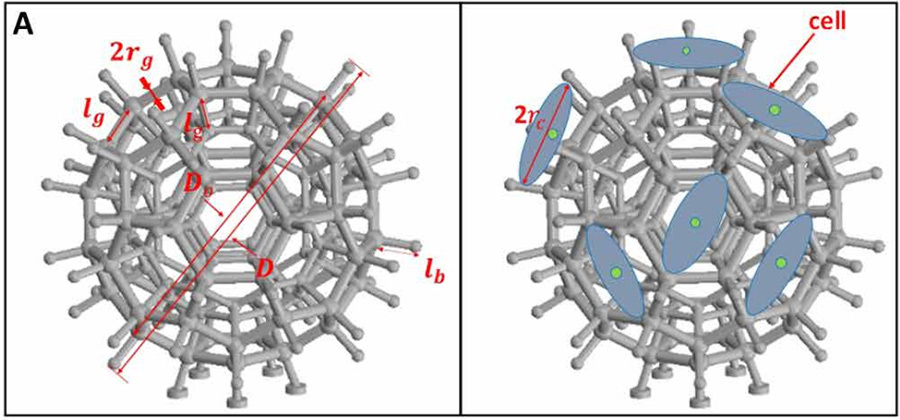
A research team from the City University of Hong Kong has used 3D laser lithography to construct a cellular scaffold as a micro-robot with a burr-like porous spherical structure and magnetic field responsiveness for targeted cell transport in vivo. This micro-robot has adjustable structural parameters that can be adapted to the size of the loaded cells to achieve better loading efficiency.

The micro-robot was prepared using 3D lithography: the negative photoresist SU-8 was spin-coated onto a glass wafer at a suitable rotational speed, preheated and cooled to room temperature, the structure was written using the nanocribe two-photon micro- and nano- 3D printing system, and after etching, high-purity nickel and titanium coatings were sprayed on to obtain the desired micro-robot.
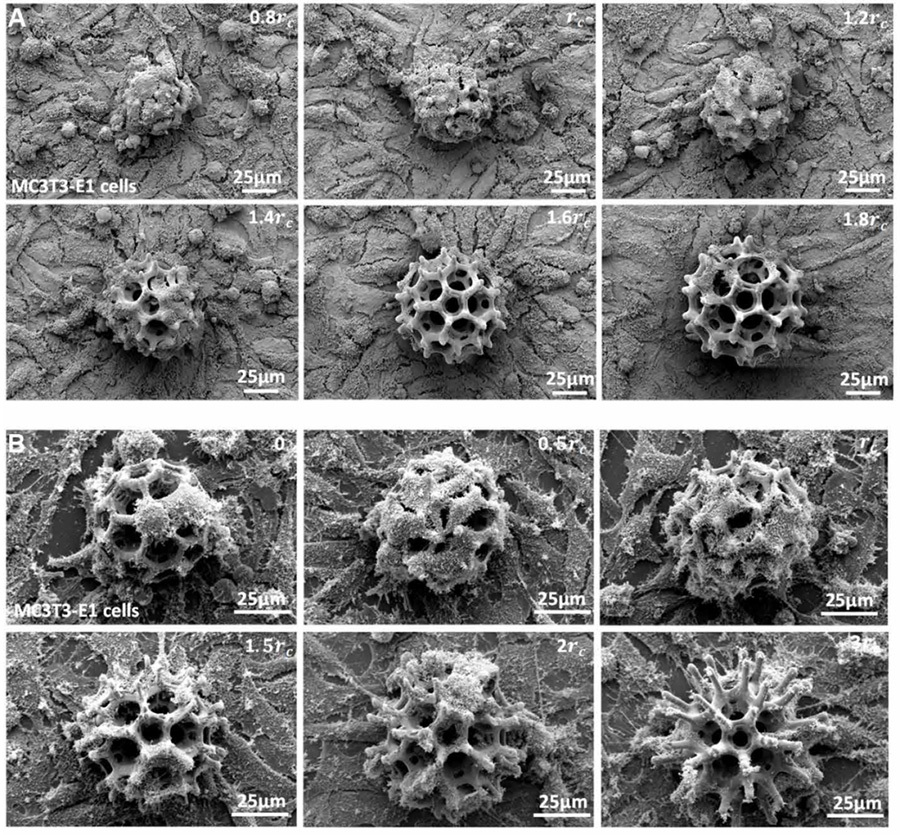
When the grid length of the scaffold is similar to the cell size, its ability to load cells is the greatest. The researchers co-cultured mouse embryonic osteoblasts MC3T3-E1 and mesenchymal stem cells (MSCs) with the micro-robot, respectively, and obtained micro-robots loaded with two kinds of cells by adjusting the design parameters, in which the diameter of the robot loaded with MC3T3-E1 cells was about 70 μm, and that of the one loaded with MSCs was about 90 μm. The results of cell viability experiments showed that the robot had no significant toxicity to MC3T3-E cells and MSCs.

Subsequently, the researchers conducted ex vivo and in vivo magnetic response experiments with the microbots. In experiments using zebrafish embryos, the MSC-loaded robot was clearly observed to move in response to the magnetic field, with the speed of movement proportional to the magnetic field gradient.
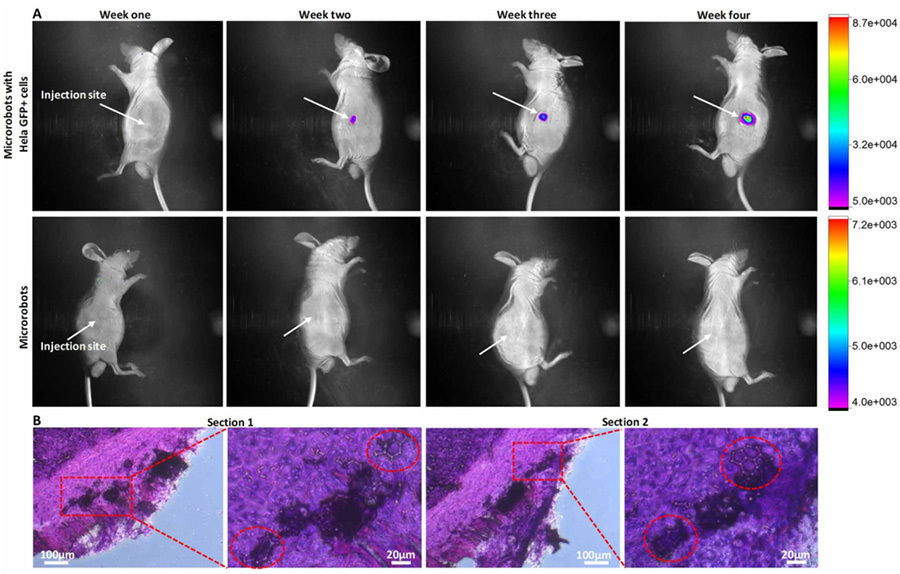
Finally, the researchers conducted in vivo experiments using nude mice to verify that the microrobots could release loaded cells, using HeLa cells labelled with green fluorescent protein for ease of observation. Microbots loaded with HeLa cells were injected into the left back of the nude mice, while microbots without cells were injected into the right back as a control, and after 4 weeks of incubation an increase in fluorescence was observed on the left back of the mice, while no fluorescence was observed on the right back. Histological results further revealed that the injected microrobots were all located at the edge of the tumour, indicating that the tumour was formed by HeLa cells released by the microrobots.
This study successfully constructed magnetically corresponding micro-robots that can be loaded with different types of cells, which have no significant cytotoxicity and can release the loaded cells at the target site, the limitation of this study is that the materials used are not biodegradable, which has limitations for their in vivo application.
03 Biodegradable micro-robots for the treatment of cartilage defects
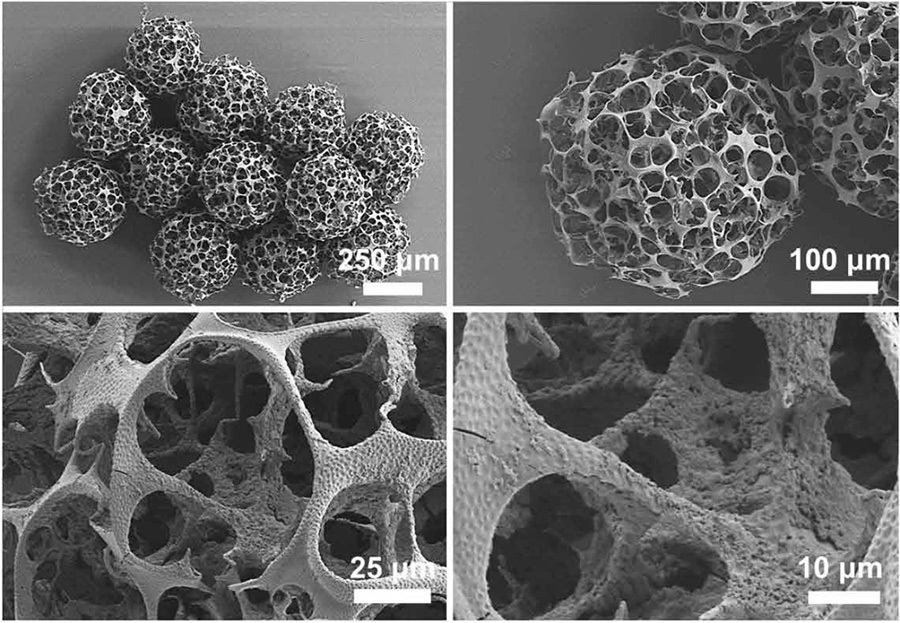
A team of researchers from South Korea has constructed a cellular scaffold suitable for loading MSCs and degradable in vivo. The researchers used polylactic acid-hydroxyacetic acid (PLGA) to fabricate the micro-scaffold and adsorbed chitosan and magnetic ferumoxytol on its surface to construct the micro-robot. The results of cell proliferation experiments showed that this micro-robot did not affect the cell proliferation rate.

To assess whether this micro-robot is suitable for cartilage regeneration, the researchers loaded human bone marrow mesenchymal stem cells onto the micro-robot and cultured them in cartilage-induced differentiation medium for 21 days. Subsequently, stem cell osteogenic differentiation was assessed using Alcian Blue staining and type II collagen immunofluorescence, which showed that the stem cells loaded on the micro-robot successfully differentiated into chondrocytes, giving them the potential to be applied to cartilage repair.
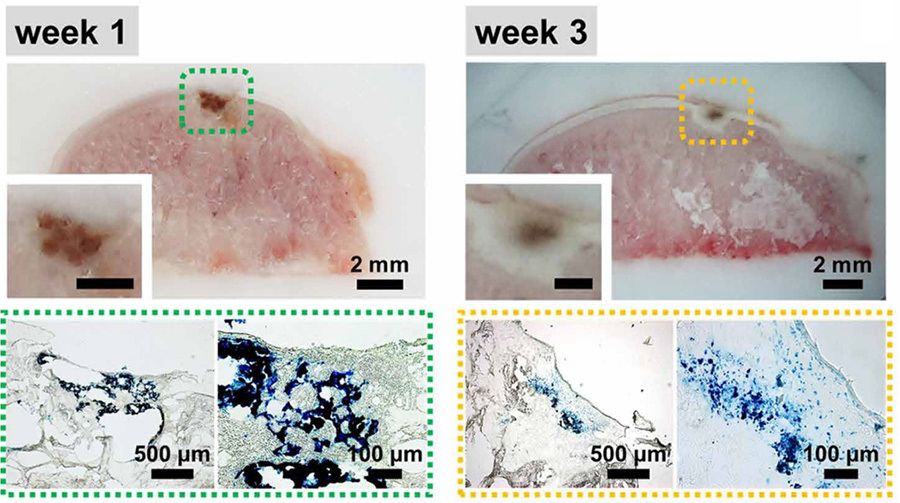
The researchers further applied the microbots loaded with stem cells to the cartilage regeneration experiments in rabbit knee joints, and in the third week of the treatment, it could be observed that the injury site was significantly reduced, and the gradual degradation of the microbots could be observed through Prussian blue staining, while the results of the cartilage distribution assay showed that the loaded MSCs didn't disappear along with the degradation of the microbots, and were implanted into the site of cartilage injury, which had a significant effect on inflammation. Expression measurements of the factors IL-1β, IL-6, IL-8, and TNF-α in synovium, synovial fluid, lymph nodes, and spleen showed no significant difference between the microrobot treatment group and the control group, suggesting that the microrobot does not cause an inflammatory response.
In this study, a magnetic microrobot for loading MSCs was constructed using biodegradable materials, and its effectiveness in treating cartilage defects in rabbit knee joints was experimentally verified. The use of the microrobot can maximise the number of stem cells at the target site and the differentiation efficiency compared with the traditional injection method, but despite this, there is still a long way to go for further clinical application, and the development of an injection device that can be used to inject the microrobot stably, as well as the development of an injection device that can be used to inject the microrobot stably, are needed. However, its further clinical application still has a way to go, requiring the development of an injection device that can stabilise the micro-robot, as well as the development of a magnetic field device that is suitable for human wear.
In the past decade or so, the application of micro- and nanorobots in medicine has achieved a certain degree of breakthroughs, and new discoveries have been made in different fields, however, there are still a lot of challenges to be faced before they can be translated into clinical applications, and the structure of micro- and nanorobots still has a lot of room for improvement, and the driving method of micro- and nanorobotics still needs to continue to be optimised, but the prospect of micro- and nanorobotics' application in precision medicine is quite broad, and its potential for use in the diagnosis and treatment of diseases is immense. However, the prospect of micro- and nanorobotics in precision medicine is quite broad, and its application in diagnosis and treatment of diseases has great potential, which will significantly change human life once the related technology can be maturely applied to human body.


